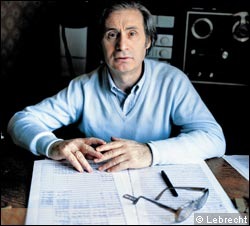
Lady Gaga
Credit: http://images.askmen.com/
Lady Gaga: Bad Romance
At age 11, Richard Strauss began five years of intensive compositional study with Friedrich Wilhelm Meyer. And that, of course, included counterpoint studies in the style of Johann Sebastian Bach. Young Strauss reports to his friend Ludwig Thuille, “Besides that I am busy doing counterpoint exercises. I am already up to 4-part fugue now, the pinnacle towards which all counterpoint aspires.” This musical apprenticeship produced a number of remarkably skillful compositions, among them a published string quartet, a piano sonata, some shorter piano pieces, an orchestral march, and even a full-length symphony. The famous composer Hans von Bülow asked the teenaged Strauss to write a large-scale work for a combination of 13 wind instruments in the form of a Baroque Suite. Upon completion, Bülow famously proclaimed “Richard Strauss is by far the most striking personality since Brahms.”
Richard Strauss: Suite in B-flat Major, Op. 4, for wind ensemble

Alfred Schnittke
Credit: http://im.ft-static.com/
Johannes Brahms: Motet Op. 74, Nr. 1
The German philosopher, cultural critic, poet and composer Friedrich Nietzsche (1844-1900) suggested that art at the turn of the 20th century was “dancing in chains.” Good art, according to Nietzsche arises from the imposition of constraints, limits, or conventions upon one’s imagination. And the music of Johann Sebastian Bach represented one important, if at times heavy link of that chain. Composers throughout the 20th century either struggled to escape the influence of Bach, or made the old master relevant in a completely new cultural and musical context. Composed in 1953, the Fuga for Solo Violin is one of Alfred Schnittke’s earliest surviving efforts. In the mold of Bach’s unaccompanied works, the pizzicato presentation of the inverted subject “adds a malevolent undercurrent that symbolizes the close of Stalin’s reign of terror.” Combining the old with the new, Johann Sebastian Bach’s genius will continue to stay relevant, no matter what style, form or convention.
Alfred Schnittke: Fuga for Solo Violin

